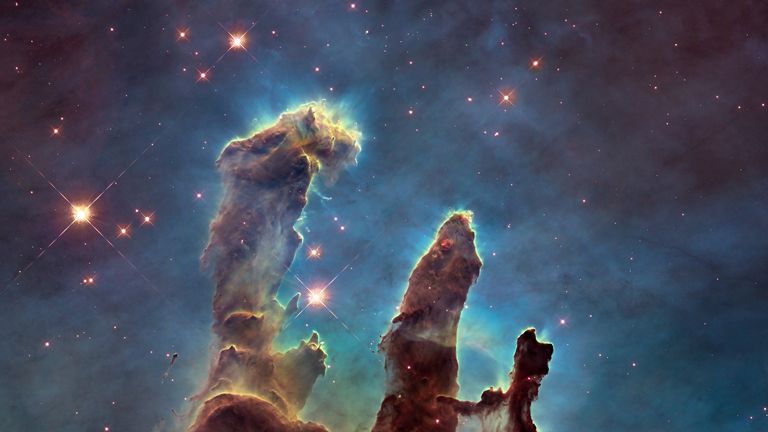A group of scientists led by astronomers at the University of California have published new data which contradicts the standard model of cosmology’s rate of the expansion of the universe.
Ever since the very beginning of the universe, known as the Big Bang, everything has been expanding – and that expansion has been accelerating.
This was discovered by the astronomer Edwin Hubble in the early 20 th century when he realized that every galaxy that could be seen in the sky appeared to be moving away from us.

Even more perplexing, he found that the farther away those galaxies were the more quickly they appeared to be traveling.
Subsequently astronomers realized that rather than strictly moving away from us, the space between us and these galaxies is growing due to the expansion of the universe.
The speed at which the universe is expanding was named the Hubble Constant in honor of the astronomer. But scientists can’t agree on what exactly this constant is, and now a new measurement suggests it is far too fast.
Using the Hubble Space Telescope as well as a system at the Kick Observatory, a group of astronomers scanned three galactic systems aided by gravitational lensing – using the way light bends under gravity to see objects further away than normally possible.
“When I first started working on this problem more than 20 years ago, the available instrumentation limited the amount of useful data that you could get out of the observations, “said Professor Chris Fassnacht.
His team’s results have been published in the latest online issue of the Monthly Notices of the Royal Astronomical Society.
They ruled out any bias in their work by conducting a blind analysis, keeping the final answer hidden from even themselves until they were convinced they had addressed every possible source of error.
“When we thought that we had taken care of all possible problems with the analysis, we unblind the answer with the rule that we have to publish whatever value that we find, even if it’s crazy. It’s always a tense and exciting moment, “said lead author Geoff Chen, a graduate student at the UC Davis Physics Department.

What they found was a value which was indeed consistent with measurements of the Hubble Constant which had been taken from observations of “local” objects close to Earth.
These local objects include supernovae – the explosion of a star at the end of its life before it collapses into a black hole or neutron star – and gravitationally-lensed systems, such as those used by Dr Chen’s team in the blind analysis.
The problem with their results is that they add to the growing body of evidence that shows different rates of universal expansion at different periods in its history – despite what the standard model of cosmology says.
The evidence shows that in the universe’s very early history it was expanding extremely fast before slowing down due to the gravitational pull of dark matter, but now appears to be accelerating again due to the mysterious force of dark energy.

The problem is that different observation techniques used to study different parts of the universe to measure the Hubble Constant find that its value differs between “local” and “distant” observations.
“Therein lies the crisis in cosmology, “said Professor Fassnacht. “While the Hubble Constant is constant everywhere in space at a given time, it is not constant in time.
” So, when we are comparing the Hubble Constants that come out of various techniques, we are comparing the early universe (using distant observations) vs the late, more modern part of the universe (using local, nearby observations). “
This suggests that either there is a problem with the team’s measurements – which the team says is unlikely – or that the standard model of cosmology needs to be changed.







GIPHY App Key not set. Please check settings